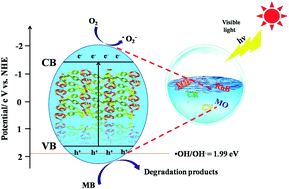A series of metal–organic frameworks constructed by a rigid-flexible 5-(bis(4-carboxybenzyl)amino)isophthalic acid: syntheses, crystal structures and physical properties†
Abstract
Four new metal–organic frameworks (MOFs), namely, [Zn2L]n (1), [Mn(H2L)(H2O)]n (2), [Cd(H2L)(H2O)2]n·nH2O (3) and [Pb2L(H2O)]n·3nH2O·nDMF (4), have been prepared by using a tetracarboxylic acid ligand H4L (H4L = 5-(bis(4-carboxybenzyl)amino)isophthalic acid) under hydrothermal conditions and structurally characterized by elemental analysis, IR spectroscopy, single-crystal X-ray diffraction analysis and powder X-ray diffraction. Structural analyses revealed that 1, 2 and 4 exhibit three-dimensional network structures. The structure of 1 can be symbolized as a 2-nodal 6-connected net with a (411·64)(47·68) topology. The framework of 2 can be considered as a 4-connected net with a (62·84)(63·83) topology. The structure of 4 can be regarded as a 5-connected net with a 43·66·8 topology. In contrast, 3 exhibits a 2D structure with a 3,3-connencted (63)2 topology. These MOFs exhibit excellent photocatalytic activities for dye degradation under visible light irradiation. Furthermore, 2 displays weak antiferromagnetic interaction at low temperature.



 Please wait while we load your content...
Please wait while we load your content...